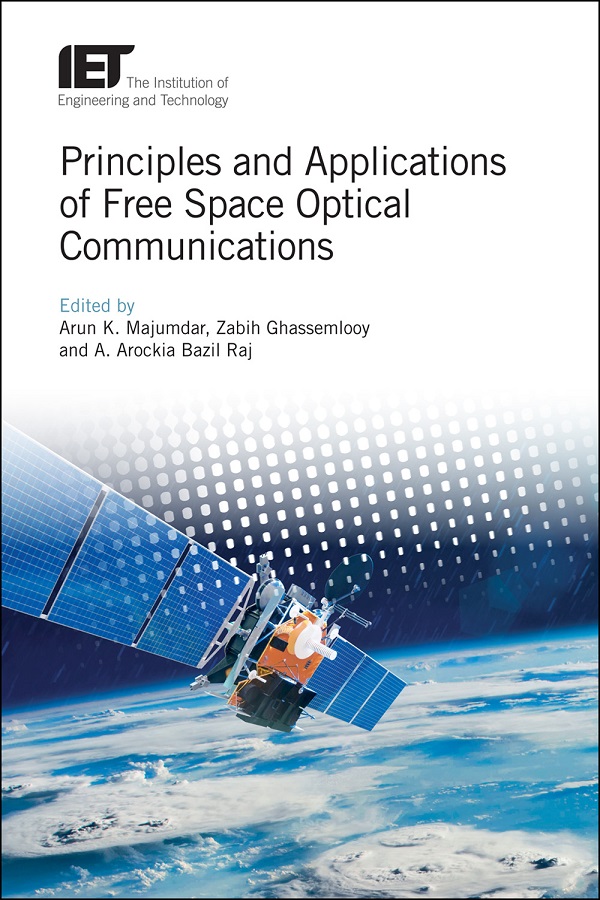- Agricultural Engineering and Technology
- Applied Physics
- Built Environment
- Computing and Networks
- Control, Robotics and Sensors
- Electrical Regulations
- Electromagnetics and Radar
- Energy Engineering
- Healthcare Technologies
- History and Management of Technology
- IET Codes and Guidance
- Manufacturing
- Materials, Circuits and Devices
- Model Forms
- Security
- Telecommunications
- Transportation

Principles and Applications of Free Space Optical Communications
Edited by Arun K. Majumdar, Zabih Ghassemlooy, A. Arockia Bazil Raj
Free Space Optical (FSO) Communication uses light propagation in free space (air, outer space, and vacuum) to wirelessly transmit data for telecommunications and communication networking. FSO Communication is a key wireless and high-bandwidth technology for high speed large-capacity terrestrial and aerospace communications, which is often chosen as a complement or alternative to radio frequency communication. The propagating optical wave can be influenced negatively by random atmospheric changes such as wind speed, temperature, relative humidity, and pressure, thermal expansion, earthquakes, and high-rise buildings. This edited book covers the principles, challenges, methodologies, techniques, and applications of Free Space Optical Communication for an audience of engineers, researchers, scientists, designers, and advanced students.
About the Editors
Prof. Arun K. Majumdar received a Ph.D in Electrical Engineering from the University of California, Irvine, an M.S in Electrical Engineering from the University of Texas, Austin, USA, and an M.Tech from the University of Calcutta, India. He has 30 years of R&D experience in the field of Free-Space Laser Communications.
Prof. Zabih Ghassemlooy received a Ph.D and MSc from the University of Manchester Institute of Science and Technology, UK. He heads the Northumbria Communications Research Laboratories as well as the Optical Communications Research Group within the Faculty, working in many advanced areas related to FSO communication systems over the last 20 years.
Dr. A. Arockia Bazil Raj received his Ph.D and M.E degrees from Anna University, Tamil Nadu, India. He is currently working in the Electronics Engineering division of Defence Institute of Advanced Technology (DIAT), Pune, India. His research interests are FSO communication, RF-photonic, radar system design and digital signal processing. He has been working in the fields of FSO communication, RF-photonics, signal processing and Radar system design over the last 14 years.
Publication Year: 2019
Pages: 496
ISBN-13: 978-1-78561-415-6
Format: HBK
Editors: Arun K. Majumdar, Zabih Ghassemlooy, A. Arockia Bazil Raj
